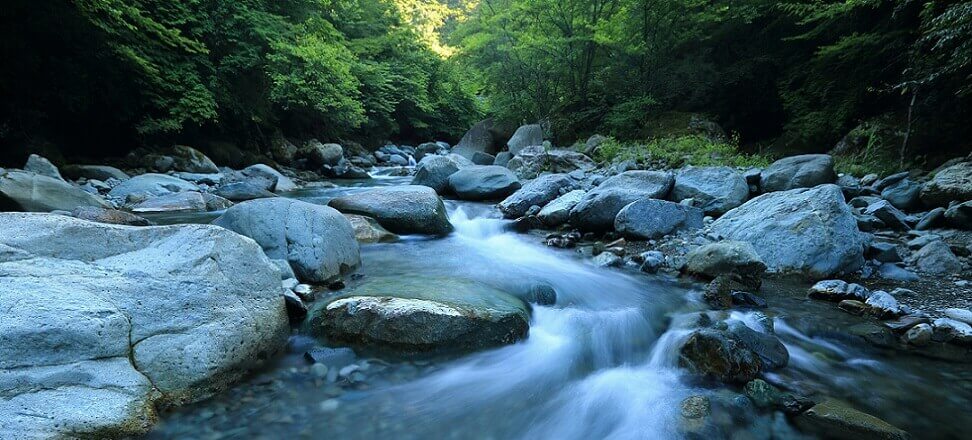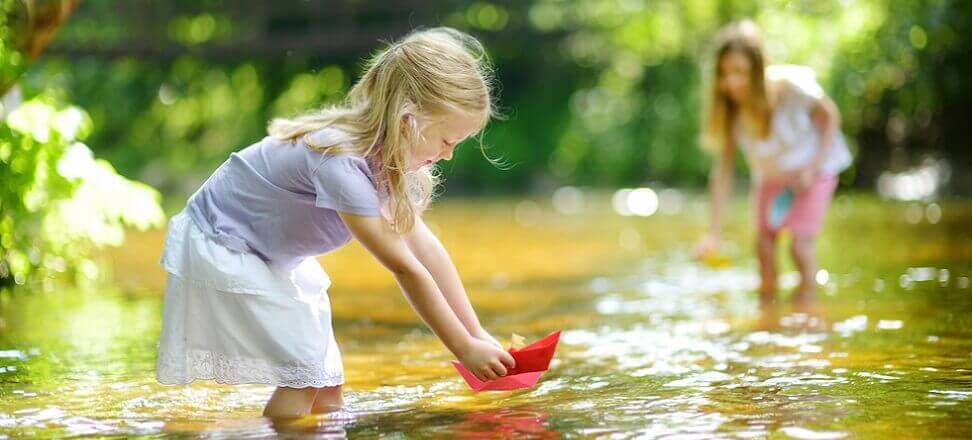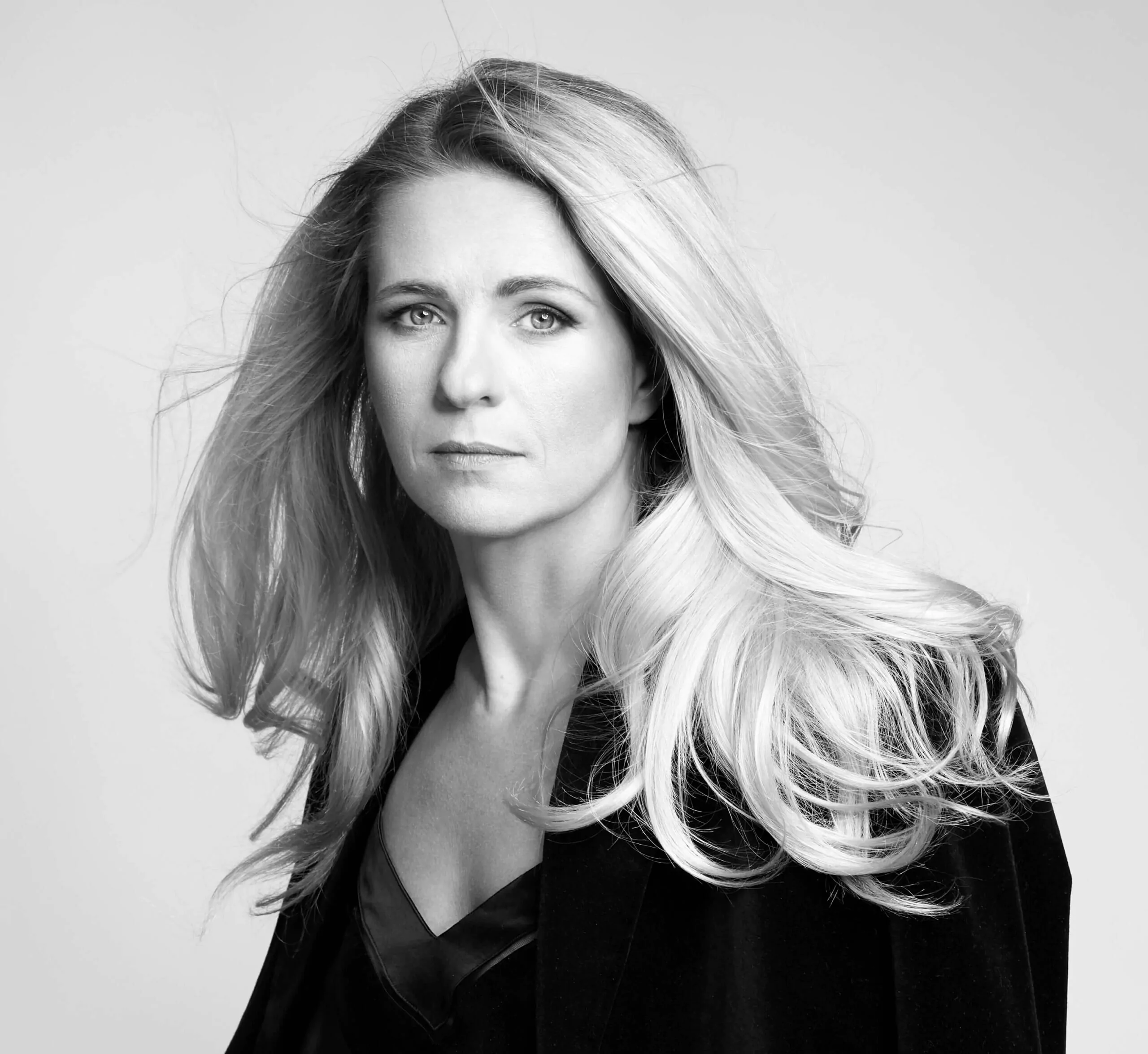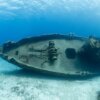Issue 12/2024, Issue topic
Sources of the Vistula River. About our beliefs
Do you know exactly where the Vistula, Poland’s longest river, has its beginning? Discovering the mysteries of its springs in the picturesque Beskids, I explore not only geographical facts, but also beliefs about water that shape our actions from an early age.
Where does the river come from?
This question is often typed into Internet search engines. Why? Are they asked by children who missed this lesson in school, or by adults who never had the opportunity to learn it? The river begins at the source. Water stored in aquifers moves toward lower areas, where hydrostatic pressure and gravity force it to the surface. These springs can be located on the slopes of mountains, in valleys or in the lowlands, depending on the geology of the area. Small watercourses merge to form larger rivers that flow toward the sea. Often the primary source of water in rivers is precipitation, but sometimes groundwater also feeds them. The process demonstrates how powerful rivers emerge from small sources.
The Vistula is flowing, flowing … or is it really?
Returning to the Vistula, this longest Polish river has its beginning in the Silesian Beskid, on the slopes of Barania Góra. These springs consist of two main streams: Black Vistula and White Vistula, which merge to form the beginning of the Vistula River. The Black Vistula flows from an altitude of about 1107 meters above sea level, while the White Vistula flows from about 1080 meters above sea level. Both of these streams play an important role in shaping the regional ecosystem, and their waters are extremely clean and rich in minerals, which promotes the development of local flora and fauna. Hydrological studies show that these springs not only feed the Vistula, but are also an important part of biodiversity conservation and regulation of water resources in the region.
Actually, I wanted to end this piece on that, but as a hydrologist I can’t help but mention that the Vistula doesn’t just flow to the sea. It has been significantly altered by human activity. From activities related to the regulation of its channel, to the construction of dams and dikes, to strong interference with natural hydrological and ecosystem processes. The intensive use of the Vistula’s waters for industrial, municipal and agricultural purposes has had a significant impact on its ecological status.
Chemical pollutants and biogens have significantly degraded the quality of the Vistula’s water, negatively affecting its biology and the ecosystems that depend on the river. All of these activities over the past decades have led to significant changes in the morphology, hydrology and ecology of the Vistula. The effects of these interferences include. Reduction of biodiversity, habitat degradation and changes in the so-called “biodiversity”. natural trough-forming processes.
Covering more than a thousand kilometers, the Vistula ends its course in the Gulf of Gdansk, where its waters become an integral part of the Baltic Sea. And as the Naturalist Club wrote on its website: Here, as a welcome gift, she offers Neptune what her current has entrained in various parts of the country. From the sand, he piles up shoals and islands, which are particularly favored by birds. Many species of gulls, numerous representatives of plovers, wagtails can be met on them. It is not without reason that ornithologists consider the Vistula estuary to be a bird’s paradise, and one reserve located near the mouth of the Vistula Bold bears such a name. In addition, there is a reserve at the mouth of the Vistula Crossing Gull’s Lacha.

A natural river, an underappreciated resource
A river is natural only if its course and structure are not significantly altered by human activity. Therefore, I would like to mention here the basic features of natural watercourses, which we underestimate because we often do not consider the river ecosystem as a whole. I am not referring to the possibility of using the rivers for our purposes, but highlighting their environmental functions that support human existence in this ecosystem.
- Natural rivers exhibit dynamic channel and bank changes, which is crucial for maintaining diverse aquatic and terrestrial habitats. These changes are the result of natural processes of erosion, sediment transport and accumulation, which create diverse environments ranging from sandbanks to gravel banks. These processes support the development of biodiversity, providing habitat for many species of fish, invertebrates, birds and aquatic plants.
- Natural watercourses play an important role in water retention, which is important for water resources management and flood protection. Floodplains and wetlands along rivers store excess water during periods of heavy rainfall, gradually releasing it during the dry season. This function is essential for maintaining a steady flow of water and protecting adjacent land from erosion and degradation.
- Another important function of natural rivers is filtration of pollutants. Rivers and their floodplains act as natural filters, removing nutrients, heavy metals and other pollutants from water. Aquatic and marsh vegetation, through biogeochemical processes, contributes to water purification, which is extremely important for maintaining water quality.
- Support for diverse plant and animal species is one of the most important aspects of natural rivers. The diversity of aquatic and riparian habitats creates habitat for many species that depend on water year-round. The hydrological and structural variability of natural rivers promotes the formation of microhabitats that support biodiversity at all trophic levels.
What a shell is made of
The aspect of education flows through our texts about water like a river, sometimes stopping, slowing down, but always flowing with the current. I must admit that the direct impetus for writing this article was the recently celebrated Children’s Day and the text that appeared on the Climate Manifesto blog on this occasion. It concerned the role of children’s environmental education in the fight against climate change. One would like to say – let’s teach children about water.
Our behavior is rooted in our beliefs, often nurtured from an early age. Beliefs and values are formed throughout life, but the key period of their formation is during early childhood and adolescence. Research indicates that children develop their core beliefs and values by about age 7, which is crucial for their future attitudes and behavior.
If, as adults, we don’t pay attention to our behavior toward nature, don’t revise our beliefs and don’t adapt to changing realities, we remain relics. It may sound blunt, but only this awareness gives hope for change – for noticing that it is the education of the youngest that is the key to changing perceptions and seeing the role of water in our lives.
For many generations, what children learned in the school or home environment was the basis of their knowledge. Now they are absorbed by virtual reality from an early age, spending on average (global figures) almost three hours a day in front of a smartphone screen. This does not diminish the role of the parent or teacher, as they are the ones who enable children to access the Internet, dictating the conditions and time of use, but it must be clearly emphasized – home and school are no longer the only sources of information for the youngest.
The aforementioned article by Magdalena Szwarc on the role of education dutifully cites opportunities and opportunities to shape children’s knowledge in and out of school, so I won’t do that. My goal is to emphasize the need to educate about water in public spaces through valuable, interesting publications in various forms – from simple online games to advanced applications. Let’s not close ourselves off to water knowledge. I hope that there will come a time when not only flood or drought will be an opportunity to engage in this topic, but that this topic will accompany us on a daily basis.
We will not accomplish anything alone….
But we can start with ourselves. There are two sides to every medal. Yes, we have a slim chance that our individual actions will contribute to changing climate policy or global action to protect marine ecosystems, but we can take care of our own garden – literally and figuratively. I would not want this to be an informative text. My intention is to spread knowledge – the more we know, the more informed decisions we make. That’s all and that’s all. That’s why when I see a neighbor watering the lawn in front of his house with tap water or washing his car every day, I wonder if it’s a conscious act or just a belief that the grass should be green and the car clean.

 Polski
Polski







